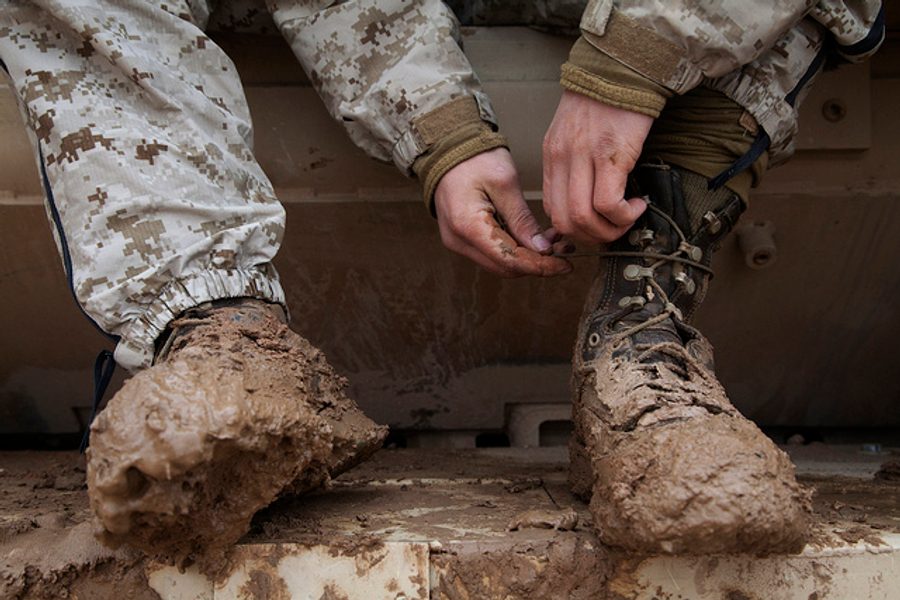
The conversation around whether to strike Syria has repeatedly returned to one phrase: boots on the ground.
Obama has insisted there will be no boots in Syria. Congressional aides told Talking Points Memo that the vote will come down to the location of the boots. NBC News polled 700 Americans and found that half of them didn’t want military action in Syria, but the number flipped to support if the military boots were not on the ground, but in the sky, with limited air strikes. And Kerry, of course, stumbled over the boots during the Senate committee hearing last week, the result being that the final Senate resolution specifically blocks military footwear on land during a strike against Syria.
The phrase “boots on the ground” is a military expression, of course. The original boots were in World War II, when “boots” was the nickname for men being inducted into the Marines. But how did the phrase jump from military-speak to media-speak?
The year is 1980. It’s April. Americans are being held hostage in Iran. On a military base in Florida, more than two hundred women and men are investigating how to get thousands of soldiers across thousands of miles, and quickly. There’s the problem of water: A soldier in the Persian Gulf needs 12 gallons of water a day, not to mention an average of 12 gallons of oil.
And then there’s the problem of the Soviet Union. Every military move is calculated on the hypothetical Soviet response. American boots touching ground in the Middle East could set off a war with the Soviets.
John K. Cooley, noted foreign correspondent and mentor to Peter Jennings, reported this story in 1980 for the Christian Science Monitor. His reporting was based on interviews with Army Gen. Volney F. Warner, and according to the New York Times’ language man William Safire, it is the earliest media use of the phrase “boots on the ground.”
In the end, the hostage crisis was resolved — not by putting military footwear in the region, but by amping up diplomacy and economic sanctions.
Cooley’s 1980 article didn’t set off a national conversation about boots. Vietnam was over. Desert Storm, to those of us that were children at the time, looked like a video game on the nightly news. War was an event that happened someplace else and to other people. Then came September 11.
Eric Zorn for the Chicago Tribune found that the New York Times ran only three stories using the phrase “boots on the ground” between the mid-eighties and Sept. 11. During the decade after the 2001 terrorist attacks, the number of “boots” in Times stories increased to 144. In the last three years, it’s jumped to 161.
If the media loves the phrase, it’s partly a reflection of the times. We have, in fact, been at war for the last decade. We have sent troops to Iraq and Afghanistan to convey the heft of American ambitions, and as we’ve done that, the phrase “boots on the ground” has bounced from war talk to the way we speak about other difficult areas of American life. Federal judges, for example, are now complaining about being the necessary shoes in trial courts, and school officials for poor black and Latino students are claiming to rely on Christian boots. Even scientists are blogging about the need to place the soles of their feet on glaciers.
One of the effects of all these boots, on news shows and blogs and social media, is the impression they create: that the way to resolve painful situations is with in-your-face action rather than diplomatic shoes.
No matter how Obama words it for us, he is asking us to send boots to Syria. Whether those boots are in the sky or in the streets of Syrian towns, we can’t indulge ourselves in thinking that it’s possible to bomb men and women and children and not dirty America’s shoes. The consequence might not be a retaliatory strike on American civilians, or even dead American soldiers, but the more we resolve conflicts with boots, the more we create a world where military means become the preferred means.





